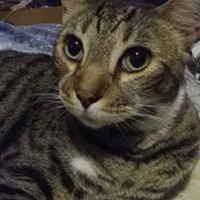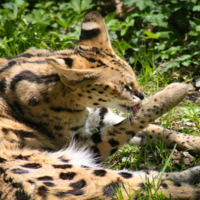Hybrid Breeding: The Hype and the Hard Truths
Hybrid cats that look like their larger, wild cousins have become increasing popular in recent years. While wonderful to have for an experienced owner, they can be a big problem to an unprepared home, and are landing in shelters in increasing numbers. Even wild cat sanctuaries have been housing them, especially if they are F1, or first generation, cross-breeds. They started as a scientific study into the resistance of wild cats to feline leukemia in the 1970's, and became an increasingly popular, and misunderstood, pet after that.
There are many types of hybrids, but some of the most popular are:
The Bengal, a mix of domestic cat and Asian Leopard Cat
The Safari, a mix of domestic cat and Geoffrey's Cat
The Savannah, a mix of domestic cat and Serval, pictured on the left.
Unfortunately, these beautiful and exotic animals were not meant to live in a home outside the wild, and their behavior shows those natural instincts for survival are not easily bred out. Hybrids tend to be more aggressive and territorial, marking "their" spaces with spraying or urinating. Many, upon reaching adulthood, will refuse to use a litter box at all and may bite or scratch their owners without warning. They can also be extremely destructive of furniture and hyper-active when bored and unable to hunt. This has led to reports of loud yowling in the middle of the night.
Their breeding can also cause health issues, such as bowel disorders and other digestive issues. Wild cats of these types would normally never breed with their domestic counterparts, and standard vaccines to keep our furry friends healthy have not been studied or approved for use in hybrids.
Please, if you are considering ownership of a hybrid cat, do your research and make sure you can provide an environment where both you and your furry friend can live happily!
Further resources about hybrid cats:
American Association of Feline Practitioners Position Statement
The Wildcat Sanctuary Information Page

